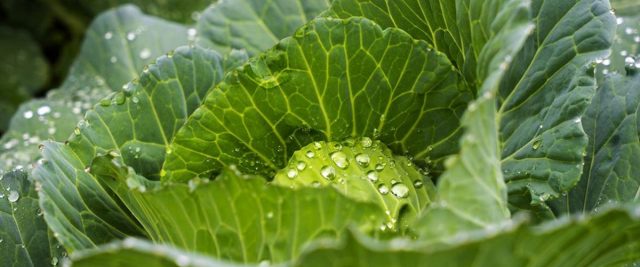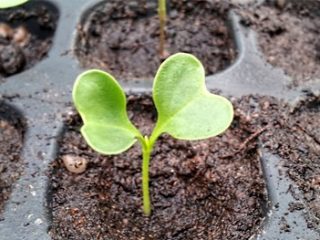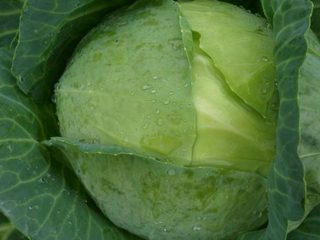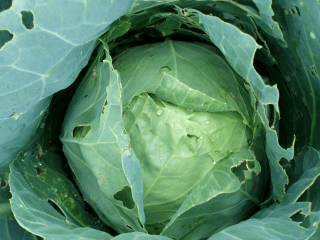Content
Watering cabbage in open ground, carried out in accordance with agrotechnical rules, will be the key to a good and healthy harvest of this useful vegetable crop. If the irrigation conditions are met, the heads of cabbage will not crack, will retain their appearance and marketability, and will also have good taste. Since the growing conditions, as well as the types of cabbage, are different, the rules for moistening them, depending on many factors, also differ, which should be taken into account when performing this important care procedure.

It is recommended to moisten cabbage in open ground, taking into account all the features of its cultivation.
How to properly water cabbage in open ground
For cabbage, proper watering is very important. It directly affects the aroma and juiciness of the heads of cabbage. Only with the required volume and quality of liquid will the crop develop properly and bring a decent harvest.Moreover, this rule applies to different types of cabbage, whether white or colored varieties - it doesn’t matter.
The basic rules that should be followed when moistening cabbage beds are as follows:
- Irrigate in the early morning (in the northern regions) or in the evening (in the south).
- Irrigate both at the roots and by sprinkling.
- Use water at the optimal temperature.
- Observe the frequency of procedures and add a sufficient amount of liquid.
Is it possible to water cabbage with cold water?
When cabbage is grown in open ground, it is necessary that the water that will be used for irrigation be at an optimal temperature. This variety of vegetable crop grows comfortably and produces a full harvest only if the liquid is warm and settled. To do this, it is first poured into containers, where it heats up faster, and all harmful impurities settle to the bottom.
Cold watering of cabbage is contraindicated. The optimal temperature of the water used should be within +18-23 °C, and a temperature of +12 °C and below is detrimental to the plant.

Water from a borehole or well cannot be used to irrigate crops.
You can water cabbage during hot weather
Since this plant is moisture-loving, it is necessary to moisturize it even in hot weather. Moreover, in order to maintain the moisture level, the frequency and rate of watering cabbage in the heat should be increased. During the dry period in open ground, 5 liters of water are used for each bush every two days.
How often should you water cabbage?
The amount of watering of cabbage in open ground depends on a number of characteristics. This is influenced by the timing of ripening, the type of crop, the type of soil, as well as the growing season of the plant. When creating a watering schedule, you should take into account the type of terrain and weather conditions of the season. But the main thing is to know that the plant consumes the most liquid in the process of forming a fork. Usually, at the stage of adaptation of young seedlings in open ground, they are watered every day, then the amount of moisture is reduced to once every three days, spending 8 liters per square meter. m., then irrigate a couple of times a week with 12 liters per square meter. In the fall, they stop watering cabbage altogether.
Depending on the ripening period
When cultivating early cabbage varieties that are especially demanding in terms of moisture in open ground, intensive irrigation is carried out in June, and abundant watering of late cabbage is organized in August, when it reaches its maximum growth.
The moisture scheme depending on the ripening period is as follows:
- early varieties begin to be watered a couple of days after planting and end two weeks before harvest;
- late varieties are moistened on the day of planting, and then a week later and finished a month before harvesting.
Depending on the type
Depending on the type of crop, watering it in open ground is carried out as follows:
- White cabbage. This variety needs moisture more than others. If it is moistened in insufficient quantities and not according to the rules, then the leaves of the heads of cabbage will become dry, hard and tasteless.
One white cabbage bush requires at least 3 liters of water per watering
- Broccoli.A species that is also demanding on humidity.
Broccoli needs 15 liters of liquid per 1 square meter. m. plot once a week
- Cauliflower. Doesn't require as much watering.
It is enough to irrigate cauliflower four times a month, using a bucket of water.
- Chinese cabbage. Type of early ripening crop.
Watering of the Beijing species needs regular, but in small doses.
Watering cabbage is often combined with feeding it.
Depending on soil type
If cabbage is cultivated in dense open ground, then moisture often stagnates in it, therefore, under such conditions, the humidity of the beds must be constantly monitored and watering must be carried out only when necessary. In the case of light soil, water is absorbed into it quickly and is almost not retained, so moisturizing needs to be done more often. On swampy land or peat bog, the crop grows only if there is good drainage, and planting it in acidic open ground is completely contraindicated.
During different periods of the growing season
Depending on the growing season, the plant is watered, adhering to the following rules:
- At the initial stage, after planting the seedlings, moistening is carried out every 2-3 days, spending 2 liters of liquid per bush.
- At the time of head formation, the frequency of watering remains the same, but the volume of water is increased to 5 liters.
- After the growth of the forks is completed, in August-September, it is enough to water the cabbage, using 2 liters of liquid 1-2 times a week.
Ways to water cabbage
Currently, gardeners practice several methods of watering cabbage growing in open ground:
- traditional (along the furrow);
- drip;
- sprinkling.
In particular, owners of small gardens use traditional irrigation, since others are considered more expensive and require special devices.

Each irrigation method has its own advantages and disadvantages
Traditional
Standard watering of cabbage in open ground, which is carried out with a watering can or through a hose, along the furrows. As a rule, this method is started at the moment when the seedlings have already adapted to the new planting site and have become quite strong. At the same time, at any stage of crop development, the water pressure should not be strong. Irrigating bushes from above is allowed only early in the morning or in the evening, after sunset.
Drip irrigation of cabbage in open ground
The drip option for watering cabbage is very effective and convenient, but at the same time the most expensive. It is better to use it not in open ground, but in a greenhouse, or to use it in cases where care is required for a large plantation or it is not possible to devote a lot of time to the plot. For this method, you will need to purchase a special, rather expensive installation that activates a system that allows water to flow to the cabbage roots in moderate portions. The advantages of drip irrigation are that it maintains the loose structure of the soil, helps maintain the desired level of humidity and prevents stagnation of moisture and drying out of the soil. It is enough to run the system for three hours before the heads of cabbage form and for a couple of hours after they appear.
Sprinkling
Sprinkling cabbage bushes in open ground means watering them leaf by leaf. This method, like the traditional one, is only suitable for mature plants and is not suitable for recently planted seedlings. In addition, this type of irrigation will require a special system consisting of a portable pipeline and nozzles, with the help of which water will be supplied regularly and in small quantities.
The downside of this procedure is the financial costs, as well as the need for frequent loosening of the beds.

The sprinkling method can be used on any type of soil
When do you stop watering cabbage?
It is also important to finish watering the cabbage on time, taking into account the fact in what phase of development it is in. In open ground, under normal conditions, it is recommended to completely stop watering approximately 20 days before harvesting. This is approximately the first ten days of September. But the timing may shift slightly depending on the region where the vegetable is grown, climatic conditions, amount of precipitation and soil conditions. Watering cabbage in October is completely pointless.
Conclusion
Watering cabbage in open ground is an integral part of caring for this moisture-loving crop. In order to get a decent harvest from a plant as a result of growing a plant, the procedure must be performed correctly.In addition, it is important to determine the moment to stop watering the cabbage; this also has a significant impact on the presentation and taste of the heads of cabbage.












